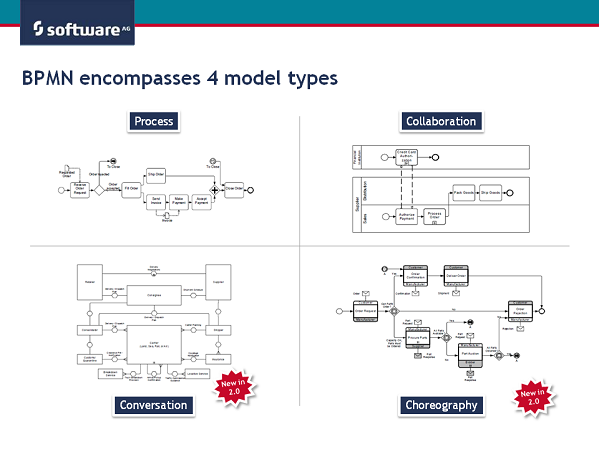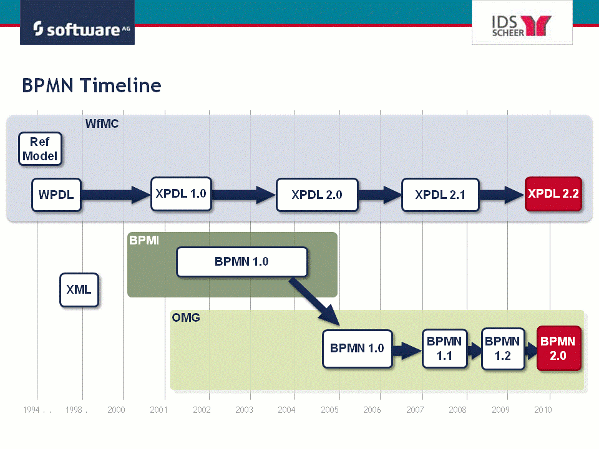I collaborated with Ivo Velitchkov on a two post series about BPMN and EPC that can be found here: https://www.strategicstructures.com/?p=402. This is part 2. The previous part focused on areas such as expressive power, readability and enterprise architecture. This one, written jointly with Roland Woldt, dwells on a few more aspects such as semi-structured processes, exceptions, loops and data handling. Some of them could be sorted well under the ‘expressive power’ heading but as stated in the previous post, the intention is just to put some structure to the ideas and experience shared, not to give a list of criteria. If in spite …
Category: Notations

The BPMN spec contains way over 100 different object types that can be used in the different model types. There are special rules about how to use them, which I will explain in later lessons. This article contains an overview of the available objects. BPMN Objects Overview Depending on your use case and point of view, the amount of available object in the different BPMN models might be a blessing or a course. Most likely business people will shy away from the notation and might see it as “too complex”, while technical folks who want to implement a workflow system …
BPMN vs. EPC revisited, part 1
I collaborated with Ivo Velitchkov on a two post series about BPMN and EPC that can be found here: https://www.strategicstructures.com/?p=361 There were several posts and discussions on the topic of “BPMN vs. EPC”. One of them is quite comprehensive and its discussion thread very interesting. But there are still many important points untouched and I’d like to share some of them for those facing a choice of business process notation. That doesn’t mean that there aren’t other options. But they have quite lower utilisation potential and/or address different needs. Certainly if UML is used, a combination of activity, statechart and sequence diagrams …
Learning BPMN 2 – Which models are available in BPMN?

BPMN is not one specific model type -like an Event-driven Process Chain- but is a collection of multiple model types that are connected to each other. This article will show the available model types in the BPMN 2.0 specification and how these are supported in ARIS (as of ARIS 7.1 SR9). BPMN model types The BPMN 2.0 specification contains some changes compared to the 1.x specification (shown in the graphic below): the BPMN process diagram was divided into two model types – the BPMN Process and the BPMN Collaboration Diagrams the new Choreography Diagram, and the new Conversation Diagram. BPMN Process and Collaboration Diagrams The split of …
Learning BPMN 1 – What is BPMN?

BPMN, which stands for Business Process Model and Notation, is a standard for creating process models and was created in the first decade of the 21st century by a consortium of industry-leading companies such as SAP, Oracle or IDS Scheer. The standard is currently managed by the Object Management Group (OMG) and the latest version of the standard (2.0) is in its final review phases to be published later this year/in early 2011. When you follow the discussion in the blogosphere about this standard nowadays, it seems that BPMN is the cure for all diseases that the other competing standards seem to have, …